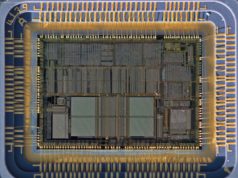The Sonos Ray is a small cheap soundbar that delivers a weighty audio upgrade, plus some extra smarts.
The Sonos Ray is the cheapest soundbar in Sonos’ range, cutting a big portion of the price of the Sonos Beam in exchange for losing some features, and to fit in an even smaller and more room-friendly frame. Sonos says that it’s designed for the nine out of 10 people in the world who are still using their TV’s built-in speakers, so for this Sonos Ray review that’s how we mostly tested it – not as a replacement for a giant soundbar under a brand-new 65-inch TV, but with a 50-inch secondary TV that’s several years old. So many of the best soundbars today are aimed at delivery big Dolby Atmos in a home theater setup, but the Sonos Beam is more about making sure that you can actually hear what people are saying and that soundtracks get enough detail and bass to sound like they’re supposed to, which TV speakers just can’t really manage. And there’s no doubt that it succeeds here. For something that’s so small that it’s at home with a TV anywhere between 24 inches and 50 inches in size, it puts out a pretty stunning amount of sound, balancing weighty bass with detail in speech. It doesn’t use an HDMI ARC port to get the sound from your TV (it uses an included optical cable instead), and this is a double-edged sword. Optical will work with basically any TV, so that’s good; but it means the Sonos Ray needs to be taught how your remote works. However, the Sonos app actually walks you through this, and makes it so easy it’s nearly foolproof – though you will need to know how to turn off your TV’s built-in speakers. The Sonos Ray might be the company’s cheapest soundbar so far, but it’s still not rock-bottom cheap as soundbars go, and its price is actually not too far from some soundbars that include subwoofers and Dolby Atmos for more dynamic and cinematic sound. If that’s what you want, the Sony HT-G700, Sony HT-S400 and Sonos’ own Sonos Beam (Gen 2) might be better purchases. But they’re all bigger – if the compactness of the Sonos Ray is a draw, then nothing else delivers such great sound for the price. And as an added bonus, it’s great with music too, and has Sonos’ full multi-room streaming tech built-in, naturally. The Sonos Ray is available to buy from June 7th 2022, and it costs $279 in the US, £279 in the UK, and AU$399 in Australia. This is a pretty significant saving compared to the Sonos Beam (Gen 2), which is the next-cheapest soundbar in Sonos’ range, and costs $449 / £449 / AU$699. The Sonos Beam is an upgrade in lots of areas compared to the Ray, but they may be features people don’t mind missing out on, such as Dolby Atmos support, built-in voice assistants, and HDMI ARC. However, there are plenty of other cheaper soundbars out there, including some well regarded options such as the Yamaha SR-B20A. You will also find soundbars heading right down under $100 / £100 – these are really just about adding volume rather than much in the way of quality, and the Sonos Ray is unquestionable a step up compared to those. The biggest danger to the Sonos Ray in the UK is the Sony HT-G700, which can be found for around the same price, but adds a subwoofer and impressive Dolby Atmos sound. In the US, the Sony HT-S400 is the spoiler, bringing a subwoofer and HDMI support for effectively the same price as the Sonos Ray. But that means it’s much bulkier, too. Let’s start with connectivity: the Sonos Ray uses an optical digital connection to connect to your TV, and that’s the only way it can connect to it. There’s no HDMI ARC port, and no 3.5mm jack. Don’t worry if you don’t have an optical cable already: you get one in the box. The advantage of using an optical connection is that basically all TVs have this, including models going back to the earliest days of HD, and it carries high-quality sound. The disadvantage is the that’s quite a dumb connection: you have to tell the TV you want the sound pushed out to the soundbar, and it doesn’t do things like allow the TV to control the volume of the soundbar. If you want to control the volume of the soundbar, you either need a dedicated remote for it, or to program the TV’s remote to work with it. This is partly why HDMI ARC is the more common way to connect a soundbar these days – it automatically routes the audio away from your TV speakers to the bar, and uses your TV’s remote for volume control without any additional setup. As mentioned above, the Sonos Ray doesn’t have an HDMI port – but the good news is that, being a Sonos product, you set the Ray up using the Sonos app, and this walks you through a process of having your Ray be controlled by your TV remote. We’ll talk more about this in a later section. Being a Sonos product also means the Ray acts as a full Sonos wireless speaker, just like everything else in the company’s line-up, as well as a soundbar. You can stream music to it from the options in the Sonos app, or use Apple AirPlay 2 or Spotify Connect to stream from a music app directly. As with all Sonos speakers, there’s no Google Cast support. It can connect to your network over Wi-Fi or its Ethernet port. You don’t get have any built-in voice assistant here, unlike the Sonos Beam or Sonos Arc. No Alexa, No Google Assistant, and no Sonos Voice Control. There’s no mic at all. You don’t get Dolby Atmos support, unlike the Sonos Beam and Arc. You get support for Linear PCM, Dolby Digital 5.1 and DTS Digital Surround – these are the core ‘basic’ sound formats used today. The reason it supports surround formats is because, despite being just a front speaker, you can add other Sonos speakers to create wireless surround sound, if you choose. It’s a nice option to have – we’ll talk about it a little later. In terms of the speaker setup itself, Sonos refers to it as a 3.






